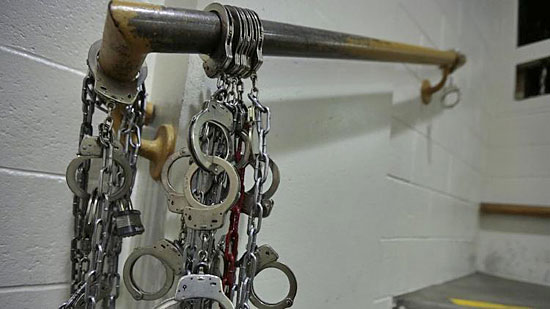A diversion from the status quo
July 3, 2014
When it comes to Los Angeles County’s decrepit Men’s Central Jail, building a better future doesn’t have to mean spending $2 billion to erect a replacement structure that would continue to house huge numbers of mentally ill inmates accused of low-level, non-violent crimes.
Two months ago, as the only member of the Board of Supervisors to vote against moving forward on this massive, publicly-financed construction plan, I argued that we must first fully investigate the opportunities for diverting low-risk members of this population into community-based treatment programs.
My reasoning was simple: if we can find more humane and effective treatment outside jail cells for these mentally ill individuals, then we might be able to scale back the size and cost of the proposed new downtown jail. At the same time, we might also be able to make our neighborhoods safer by reducing the high rate of recidivism typically associated with mentally ill offenders. They stand little chance of achieving lasting recovery inside an oppressive and teeming jail environment where they have been chained to tables during therapy sessions and victimized not only by fellow inmates but by some sheriff’s deputies who run the operation.
This week, the American Civil Liberties Union of Southern California released a persuasive new report that should serve as yet another reminder of why we must confront this issue now, before we commit another dollar to a construction project that, while well intentioned, will continue to give our county the ignominious distinction of overseeing the biggest mental hospital in the nation.
The report, produced in conjunction with the Bazelon Center for Mental Health Law, cites examples from around the country, where recidivism and incarceration costs have been slashed through jail diversion programs. One, in New York, reported a 70% reduction in arrests among participants during a two-year period, according to the report. A diversion program in Miami-Dade County, meanwhile, reduced recidivism among misdemeanor offenders from 75% to 20%.
The report also notes that, once an individual is placed in a community-based setting, federal and state funds can be tapped to help finance the treatment, which can’t be done as long as a person remains behind county bars.
Among the leadership of the Sheriff’s Department, there’s a belief that only a new 5,000 bed mental health jail will satisfy the U.S. Department of Justice, which has been monitoring the county’s treatment of mentally ill inmates for more than a decade, ever since concluding that their constitutional rights were being violated. Last month, the DOJ didn’t pull punches when it informed us that, despite improvements, serious problems remain in preventing inmate suicides. The justice department lawyers warned that they’re now prepared to step up the oversight by seeking the intervention of the federal courts.
It seems clear to me from the tenor of that 36-page letter that the Justice Department expects improvements now, not in 10 years, when the proposed new jail would be scheduled for completion. In fact, the DOJ lawyers praised a Board of Supervisors vote to analyze diversion programs and said “we strongly encourage the Sheriff, the Mental Health Director, and the County to consider alternatives to incarceration” for mentally ill inmates.
Finally, for those of you who might be inclined to dismiss the ACLU report as a predictably liberal position, I’d point out that the leading champion of community-based diversion programs is Los Angeles’ top prosecutor, Dist. Atty. Jackie Lacey. During testimony before the Board of Supervisors on the day of the jail construction vote, she suggested that as many as 1,000 inmates may be needlessly held behind county bars. “The current system is, simply put, unjust,” Lacey said bluntly.
And that can’t be made right by embarking on the biggest capital-spending project in Los Angeles history. This issue, with the stakes so high, requires a level of intellectual capital that we’re only now starting to expend.
Posted 7/3/14













 405 bridge work causes a stink
405 bridge work causes a stink





